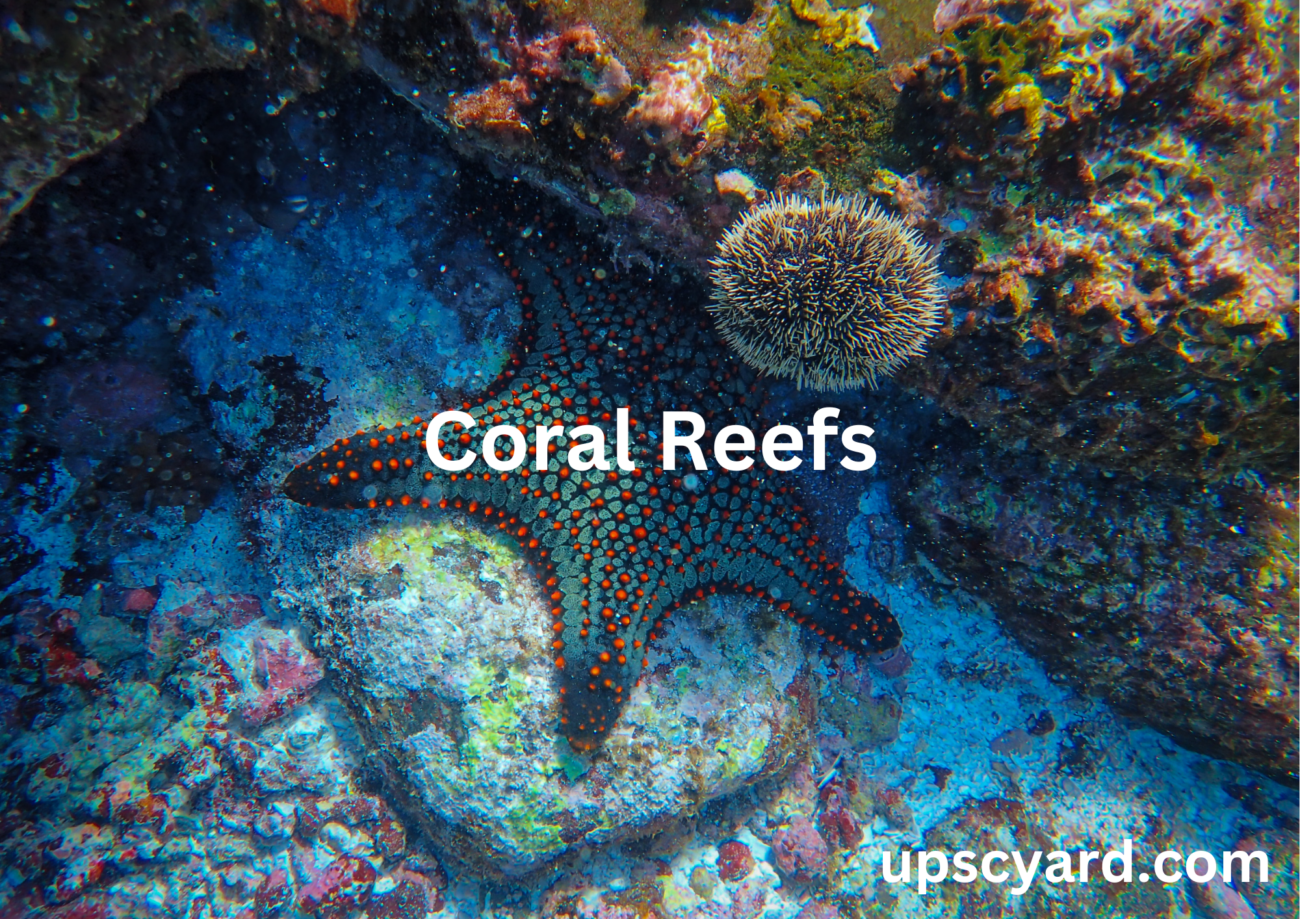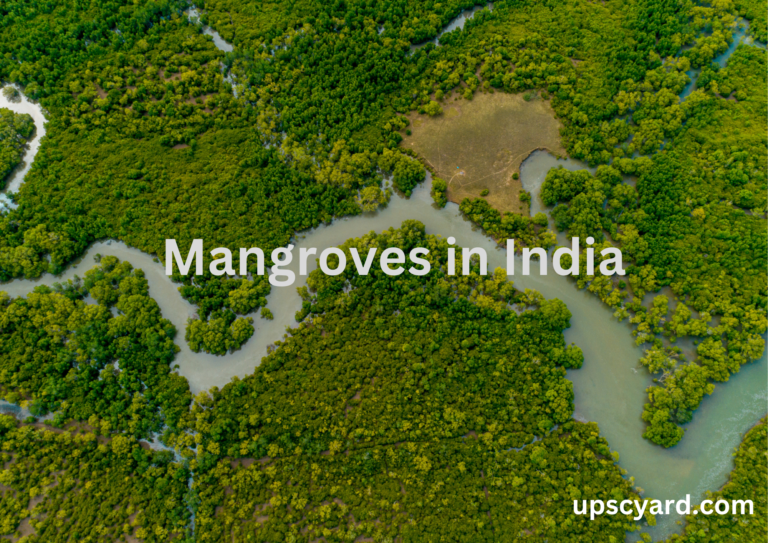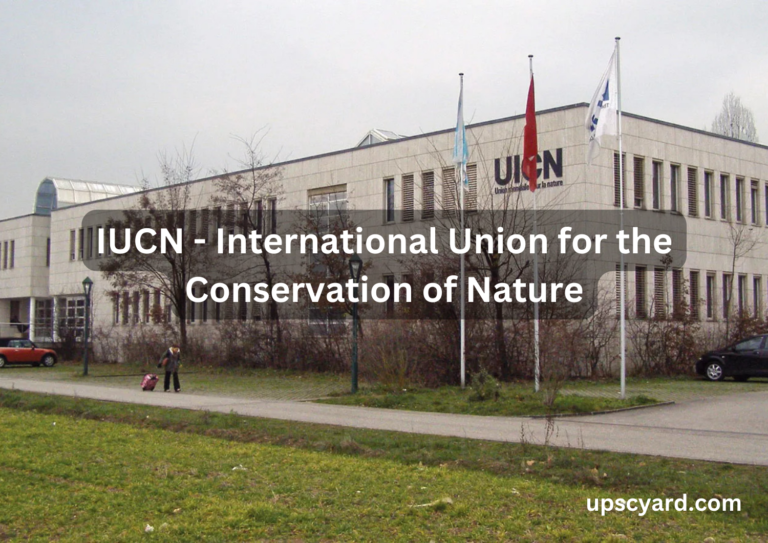Coral reefs are vital underwater habitats that play a crucial role in maintaining ecological equilibrium. Often referred to as the ocean’s rainforests, these ecosystems have faced significant challenges in recent years.
Coral polyps are solitary coral organisms that inhabit the calcium carbonate skeletons left behind by their predecessors. Corals are present across various oceanic regions, with the most extensive coral reefs predominantly thriving in the crystal-clear, shallower waters of tropical and subtropical zones. Among these immense coral reef complexes, Australia’s renowned Great Barrier Reef stands out, stretching over an impressive span of more than 1,500 miles.
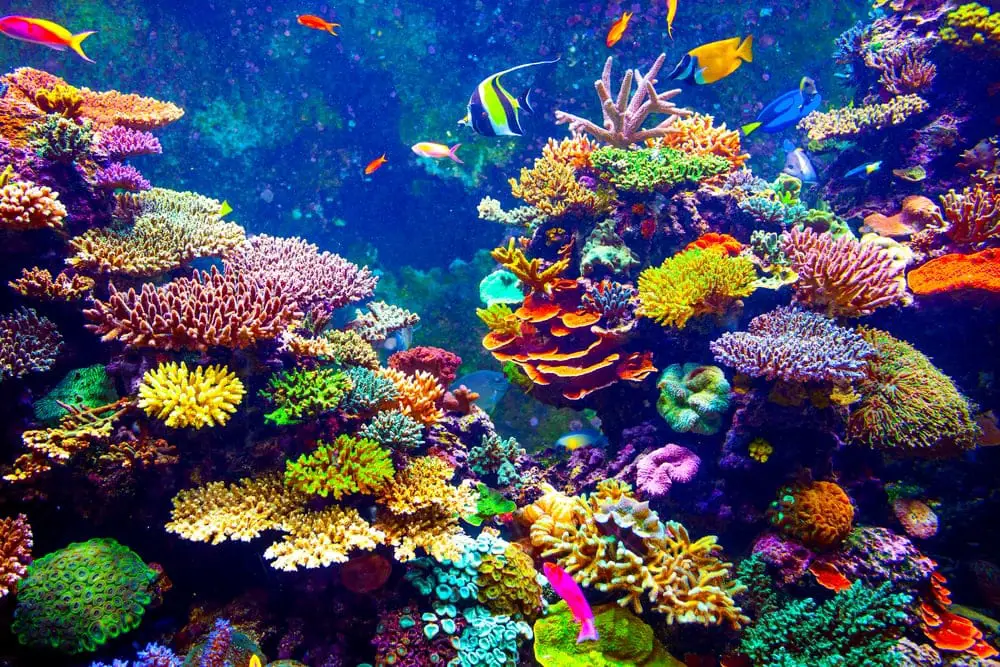
Types of Coral Reefs
Coral Reefs exhibit diversity based on their shapes, characteristics, and occurrence patterns, resulting in three distinct categories , also mainly prevailing in india.
- Barrier Reef: The largest and most expansive of the three types, Barrier Reefs extend parallel to the coast, forming a broken and irregular ring off the shoreline. Spanning up to 100 kilometers in length and several kilometers in width, they are the most significant reef formations. An iconic example is the Great Barrier Reef in Australia, stretching an impressive 1200 miles long.
- Atolls: Atolls are characterized by their roughly circular shape, encircling a sizable central lagoon. The lagoon often boasts significant depths ranging from 80 to 150 meters. Situated away from deep sea platforms, atolls form around islands or on submarine platforms, often exhibiting an elliptical configuration. Notable instances of atolls include Fiji Atolls, Suvadivo in the Maldives, and Funafoothis Atoll in Ellice.
- Fringing Reef: Fringing Coral Reefs are located close to the shoreline, forming shallow lagoons referred to as Boat Channels. Typically forming along islands and continental margins, they extend from the ocean floor with a steep seaward slope towards the deep sea. Among the three types, Fringing Reefs are the most prevalent. Examples include Sakau Island in New Hebrides and the South Florida Reef.
Ideal Growth Conditions for Coral Reefs
The water temperature should maintain a minimum of 20°C for optimal coral reef growth. The most conducive temperature range lies between 23°C and 25°C, while caution should be exercised to prevent exceeding 35°C.
Coral survival depends on a salinity range of 27% to 40%, ensuring they thrive in saline conditions.
With depths not surpassing 50 meters, Shallow waters provide a favorable environment for coral reef development. However, avoiding depths exceeding 200 meters is crucial to support their growth effectively.
Importance of Coral Health
Biodiversity Preservation: Coral reefs host diverse marine species that rely on them for nourishment, sanctuary, and reproduction. Vibrant corals foster a thriving marine ecosystem while deteriorating corals can disrupt this delicate web, leading to disturbances in the marine food chain.
Economic Impact: Flourishing coral reefs are alluring tourist destinations, contributing significantly to local economies. Coral bleaching can have adverse effects on tourism-related revenues.
Sustaining Fisheries: Fishing communities are intricately linked to coral reefs, as they facilitate the seasonal migrations of various fish species. Unhealthy coral systems can trigger declining fishing opportunities, affecting economic livelihoods.
Coastal Defense: Coral reefs act as natural barriers, absorbing the relentless force of ocean waves. This protective function shields coastal populations from escalated storm-induced destruction, shoreline erosion, and flooding hazards.
Coral Reefs of India
India boasts a coastline spanning over 7500 kilometers. Owing to its subtropical climate, the presence of coral reefs in India is limited.
Palk Bay
Situated on the southeastern coast, Palk Bay is separated from the Gulf of Mannar by the Mandapam Peninsula and Rameshwaram Island. The maximum depth of this reef is around 3 meters.
The Gulf of Mannar
Encompassing a series of 21 islands, the Gulf of Mannar extends between Tuticorin and Rameswaram, covering a distance of 140 km, forming the Mannar Barrier Reef, measuring 140 km in length and 25 km in width.
Andaman and Nicobar Islands
The Andaman and Nicobar Islands span between latitudes 6°-14° N and longitudes 91°-94° E. Situated in the southeastern part of the Bay of Bengal, this cluster comprises 350 islands, with only 38 inhabited. Stretching from the Irrawaddy Delta of Burma to the Arakan Yoma Range, these islands predominantly exhibit fringing reefs.
The Gulf of Kutch
Found in the northern region of the Saurashtra Peninsula, the Gulf of Kutch covers an area of approximately 7350 sq km. The fringing coral reefs are about 170 km long and 75 km wide. Due to sediment deposition, these coral reefs have experienced significant degradation.
Lakshadweep Islands
The Lakshadweep Islands are scattered across the Arabian Sea, approximately 225 km to 450 km off the Kerala Coast. This archipelago, spanning an area of 32 km2, comprises 36 small islands, 12 atolls, three reefs, and five submerged banks, featuring extensive lagoons covering around 4200 km2.
These islands’ warm and humid climate results in water temperatures ranging from 28-31°C, with salinity levels varying between 34% and 37%.
Coral Bleaching
Coral and zooxanthellae have a mutually beneficial relationship, with around 90% of nutrients produced by the algae being passed on to the coral hosts. However, this relationship is disrupted during intense environmental stress, leading to the loss of symbiotic algae (zooxanthellae). This loss reveals the white calcium-carbonate exoskeleton through the coral’s transparent tissue, a phenomenon termed Coral Bleaching.
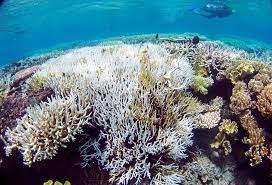
Causes of Coral Bleaching
Elevated Sea Temperature: Coral species thrive in waters with temperatures within their tolerance limits. Even a slight rise in ocean temperature can lead to harm. Occurrences such as El Nino and marine heatwaves elevate sea temperatures, destroying coral reefs.
Severe Low Tides: Extreme low tide events expose corals to intense solar and ultraviolet radiation, triggering coral bleaching.
Ocean Acidification: While oceans serve as carbon sinks, increased carbon dioxide levels elevate ocean acidity. This acidity impedes corals’ ability to form calcareous skeletons, crucial for survival.
Disease Outbreaks: Certain bacteria like vibrio shiloi impede the photosynthesis of zooxanthellae. These bacteria become more potent as sea temperatures rise.
Ocean Pollution: Elevated nutrient concentrations foster excessive phytoplankton growth, attracting marine life that might strain coral reefs.
Sedimentation: High land erosion rates introduce silt and other sediments into ocean waters, causing sedimentation and water cloudiness. This siltation can smother corals, while reduced light due to turbidity diminishes coral photosynthesis and growth.
Human-Induced Threats: Overfishing, pollution from agricultural and industrial runoff, coral mining, and development near coral ecosystems negatively impact coral reefs.
Predators: The Crown-of-Thorns Starfish, scientifically known as Acanthaster planci, consumes corals during the night. Massive populations of these starfish can devastate entire coral reef systems.
Efforts on a global scale to safeguard coral reefs
Safeguarding encompasses diverse initiatives on research, information exchange, conservation, and management. These endeavors are aimed at aiding countries in attaining the Aichi Biodiversity Targets and Sustainable Development Goals.
Some of these initiatives include:
- International Year of the Reef
- UN Environment Global Coral Reef Partnership
- Global Ocean Acidification Observing Network (GOA-ON)
- Ramsar Convention
- Coral Triangle Initiative

